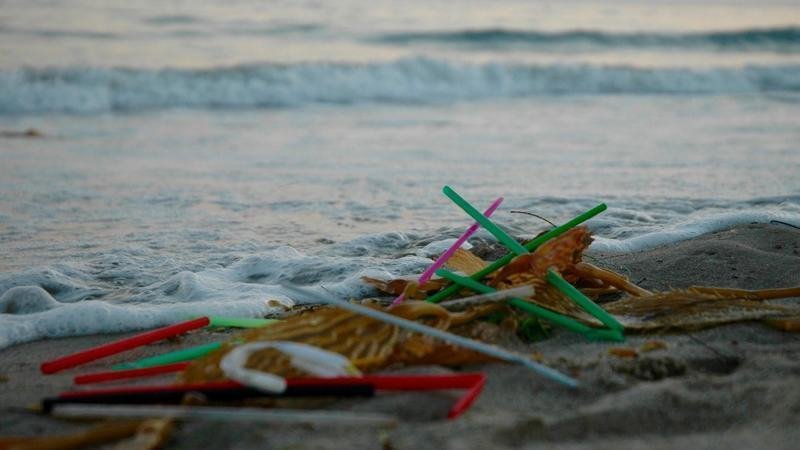The Last Straw- Drowning in Plastic
Author Robert Swan said the greatest threat to our planet is the belief that someone else will save it. When it comes to our oceans and waters, that threat is becoming all too real. Plastics are putting marine animals and other sea life in real danger and environmentalists are sounding the alarm to the rest of the world.
Do you ever wonder where plastic material goes after we use it? Some is washed up onto our beaches and some is mistaken for food and eaten by marine animals. Other plastic waste ends up in spiraling ocean currents of debris. Regardless of where it ends up, the nearly eight million tons of plastic entering our oceans every year is destroying natural marine habitats and negatively affecting our health.
Plastic is all around us. From water bottles, to Styrofoam packaging, plastic has become a part of our lives, and it’s causing environmental damage at an alarming rate. It’s estimated that 80 percent of all marine debris is some form of plastic.
One major culprit is single-use plastics, often found in food service. Plastic wasn’t even invented until 1907, yet it’s become a staple of convenience offering human populations convenient food packaging, take-out coffee cups, plastic bags and throw-away beverage bottles to name a few. While these items are easily disposed, they are not easy to recycle.
The impact of this enormous amount plastic on marine life is devastating. Researchers estimate about 100,000 marine mammals are killed every year as result of ingesting plastic. A sea turtle may look at a plastic bag and see a tasty jellyfish. Yet, because plastic is indigestible, it can cause choking or intestinal blockage in the animals who accidently ingest it.
Hundreds of marine species are directly affected by our plastic habit, including dolphins, whales and turtles to name a few. It’s not uncommon to see the carcasses of these animals wash ashore with over a hundred pieces of plastic in their stomachs.
It’s not just marine life that ingests these plastics in our environment. A recent report from the United Nations concluded that humans also consume small amounts of plastics which can lead to major health issues when these particles accumulate in our system. The only way to keep plastics out of our food system is to keep it out of the food chain and reduce the amount of plastic in our oceans, rivers and other waters.
Communities, businesses and consumers all play a vital role in reducing the amount of plastics in our waters. By banning single-use plastics and expressing their concerns, consumers can help drive progressive change and demand companies pay attention to environmental progress. Consumer outrage over the damaging effects of plastics is a driving force for change and promising motivator for businesses to take action.
Other ways to take meaningful action are to invest in reusable, steel water bottles and coffee containers. Reusable, stainless steel straws make great gifts and also encourage productive discussions about plastics and the environment. After all, do we really need plastic straws in our drinks or plastic micro-beadsin our toothpastes?
Things don’t just “go away” when we are finished using them. When we throw something away, it has to go somewhere. If it can’t be recycled, reused or composted, it’s best not to use it in the first place. We cannot consume our way to a more sustainable world. We must commit to a lifestyle of sustainability. In the words of Jane Goodall, you cannot get through a single day without having an impact on the world around you. What you do makes a difference, and you have to decide what kind of difference you want to make.


